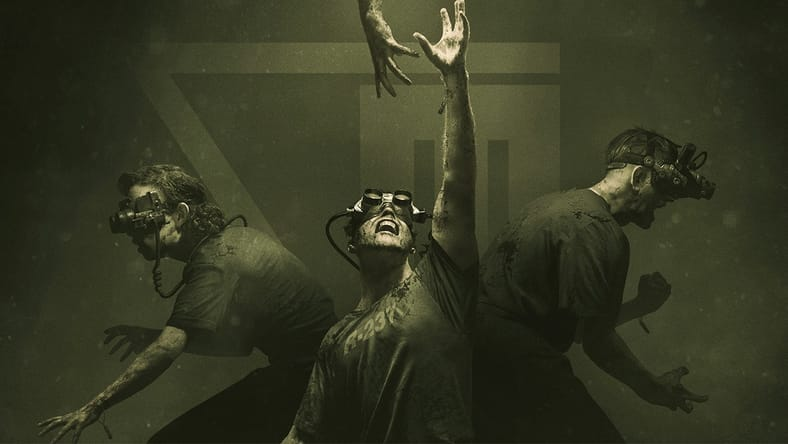When it comes to psychological horror in video games, Outlast, developed by Red Barrels, stands as a visceral masterpiece. Its blood-soaked visuals and disturbing imagery aren’t just there for shock value—they serve a deeper narrative purpose, amplifying fear while offering a haunting social critique. In a genre where violence is often gratuitous, Outlast dares to use brutality meaningfully.
❌ Gratuitous Violence vs. Meaningful Impact
Let’s define the line between gratuitous violence and violence with narrative weight.
Gratuitous violence refers to graphic content inserted purely for shock or spectacle—lacking emotional or narrative context. A classic example? The later Saw sequels. While the original film explores moral dilemmas and psychological tension, its follow-ups often focus on exaggerated gore for gore’s sake.
Similarly, Rockstar’s Manhunt was heavily criticized for glorifying murder without deeper reflection. The player is reduced to a tool of violence, with no moral engagement or emotional grounding.
Compare this to titles like The Last of Us, where brutality reflects a world stripped of humanity, or Schindler’s List, where violent scenes are necessary to convey historical horror. The key difference? Purpose. Violence used to shock ≠ violence used to provoke thought.
🔪 Outlast: Horror With Intent
The Outlast series (Outlast, Whistleblower, and Outlast 2) plunges players into terrifying environments—be it an abandoned asylum or a fanatical village—armed with nothing but a camcorder and sheer terror.
Unlike games like Dead Space, where combat empowers the player, Outlast strips away all forms of defense. You can’t fight. You can only run, hide, or record. This vulnerability is crucial. When your character’s fingers are cut off in Whistleblower or you stumble upon grotesque mutilations in Outlast 2, the horror hits harder because you are powerless.
This mechanic echoes titles like Amnesia: The Dark Descent, where being defenseless turns every encounter into a panic-inducing nightmare.
🧠 Violence as Social Commentary
What truly elevates Outlast is how it uses violence as a mirror to society’s darkest corners:
- In the original game, Mount Massive Asylum is a symbol of unethical experimentation and corporate exploitation, exposing how profit can override humanity.
- Outlast 2 dives deep into religious extremism, showcasing how blind faith can fuel horrific acts. The violence here isn’t just gruesome—it’s a critique of fanaticism and manipulation.
This is a far cry from games like Hatred, where indiscriminate killing is the entire premise, devoid of context or message. Outlast dares to ask: What kind of systems breed such horror? And what role do we play as witnesses?
🧱 Narrative Structure and Atmosphere
One of Outlast’s greatest strengths is atmospheric storytelling. Long before the first mutilation or chase sequence, the game suffocates you with dread—through dim corridors, unsettling audio, and cryptic documents. When violence erupts, it feels like a terrifying climax, not a cheap scare.
This approach mirrors horror cinema classics like The Shining, where tension builds slowly, making the eventual bursts of violence unforgettable.
Additionally, Outlast uses violence to build complex antagonists. Take Marta in Outlast 2: her brutal acts stem from warped religious conviction, making her more than just a monster—she’s a tragic figure shaped by belief and trauma. It’s this emotional depth that gives the franchise lasting impact.
⚖️ The Power of Restraint
Despite its gory reputation, Outlast doesn’t drown players in nonstop bloodshed. The horror is carefully paced. Quiet exploration and lore discovery are balanced with intense, disturbing moments. This rhythm ensures each scene retains its emotional weight.
Compare that to Mortal Kombat, where over-the-top fatalities are fun but become almost comedic due to constant overexposure. Outlast knows when to go hard—and when to pull back.
🔥 The Legacy of Purposeful Violence
Outlast proves that violence in games can be more than a shock tactic. When woven into a strong narrative and atmospheric design, it becomes a language—one that communicates fear, despair, and even societal truths.
While some games and films fall into the trap of empty spectacle, Outlast balances shock and substance, reminding players that horror can be visceral, thought-provoking, and profoundly human.
🧟 Final Thoughts
In a genre often saturated with clichés, Outlast stands out by giving meaning to every scream, every bloodstain, and every mutilated body. It challenges what horror games can achieve when they stop chasing jump scares and start telling stories that hurt in all the right ways.
So next time someone tells you horror is just gore and guts, point them toward Outlast—and watch them run.
✍️ What’s your take on violence in horror games? Do you prefer thoughtful terror or all-out gorefests? Drop your thoughts in the comments!
#Outlast #HorrorGames #RedBarrels #GameAnalysis #PsychologicalHorror #GamingEditorial #NarrativeDesign #VideoGameViolence #Outlast2 #Whistleblower




